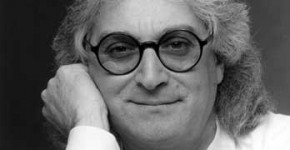Justin DiCioccio is internationally recognized as one of the foremost jazz educators of our time. In January 2001, he was inducted into the Jazz Education Hall of Fame. His keen insight into teaching and his inventive approach have earned him the title “the musician’s teacher.” In 2002, Mr. DiCioccio was named Assistant Dean/ Chair, Jazz Arts Program of Manhattan School of Music; in 2011 he was named Associate Dean. Under his leadership, the jazz curriculum has been completely restructured, including the creation of a new jazz DMA program. He has put into action his concept of the complete artist-musician —performer, composer, and pedagogue— by developing partnerships with public schools, community organizations, cultural institutions, and the music industry.
This past July I hung out with Justin at his lovely home in the Berkshire Mountains in Massachusetts and took advantage of his never ending hospitality. I was curious about his teaching philosophy and came up with a few questions to put to him while waiting for our wives to join us for dinner
Barry: How long have you been teaching drums and percussion?
JD: I started teaching privately in the early 60’s. I have been instructing in institutions since 1971 when I began at the High School of Music and Art in NYC teaching drumset, technique, reading, percussion, and percussion ensemble.
Barry: Do you have a practice regiment you apply in teaching drum students?
JD: I believe in the George L. Stone Stick Control system which I apply to drumset for sound, articulation, time and phrasing. As a second concept I use Charles Wilcoxon’s Swing Solos. I apply that to drumset as well.
Barry: What five qualities do you look for in a great musician?
JD: The number one quality is potential and interest. The other priorities are: natural ability, love, dedication, commitment, belief and work ethic. Sorry, I guess that’s more than five.
Barry: Who are the five leading innovators you recommend studying in order to become a well rounded jazz drummer?
JD: This is a difficult question. There are so many great players. But I will say listening, studying Papa Jo Jones will give you a history of the lineage of jazz drumming, from Baby Dodds forward. You need to listen to Max Roach, Art Blakey, and Philly Joe Jones. These are who I call “harmonic rhythm players.” And then, Roy Haynes and Elvin Jones for “linear” playing. They started the quarter note triplet style of playing. These I would consider the 5 Master Players plus, of course, Papa Jo Jones.
Barry: In conclusion, I am sure you would like to add some thoughts of your own we did not discuss:
JD: Yes. In Jazz or beat oriented music no matter what instrument you play, you are a drummer. Whether you play piano, horn, guitar, it may look like a piano, horn, guitar but it’s a drum. Meaning, everyone plays time. A perfect example is the great tenor saxophonist, Sonny Rollins, who can make a rhythm section play on top of the beat, behind the beat, wherever he wants it as his time is so solid and strong. Another point I wish to make is the two most important things in playing Jazz or beat oriented music are: Rhythm and Sound. Rhythm is number 1, Sound is number 2. Rhythm is about the pulse, time. It makes it happen. Rhythm makes it move and groove. But Sound is you! That’s what defines you. Your voice is your sound. People recognize you by the sound of your voice. You must develop the same on your instrument so when you play people know that is you by your sound. Great actors become the character. They are part of a story. Musicians need to be storytellers. They need to tell a story and not focus on just the technical aspects of the music. I think a lot of the Jazz audience has turned away from the music because players are no longer story tellers. The message is not getting across.
Finally, the other thing Jazz drummers need to think about is time. The feeling of Jazz comes from West Africa. It’s the West African beat and feel that is the time basis of the music. Emotions and feelings make the music not mathematical formulas or science. The emotion of the blues mixed with boogie woogie solo style piano is the time feel for Jazz. You must feel rhythm throughout your body, not just your hands and feet but throughout your body. In West Africa the musicians dance, sing, perform—do it all! It is who they are. The Jazz player must incorporate this thinking in playing the music.
Barry: What a pleasure it is sharing your thoughts and teachings. I appreciate you spending this time with me and giving us all something to think about. You deserve to eat dinner now.
JD: It has been my pleasure. Thank you! Yeah, let’s eat!

